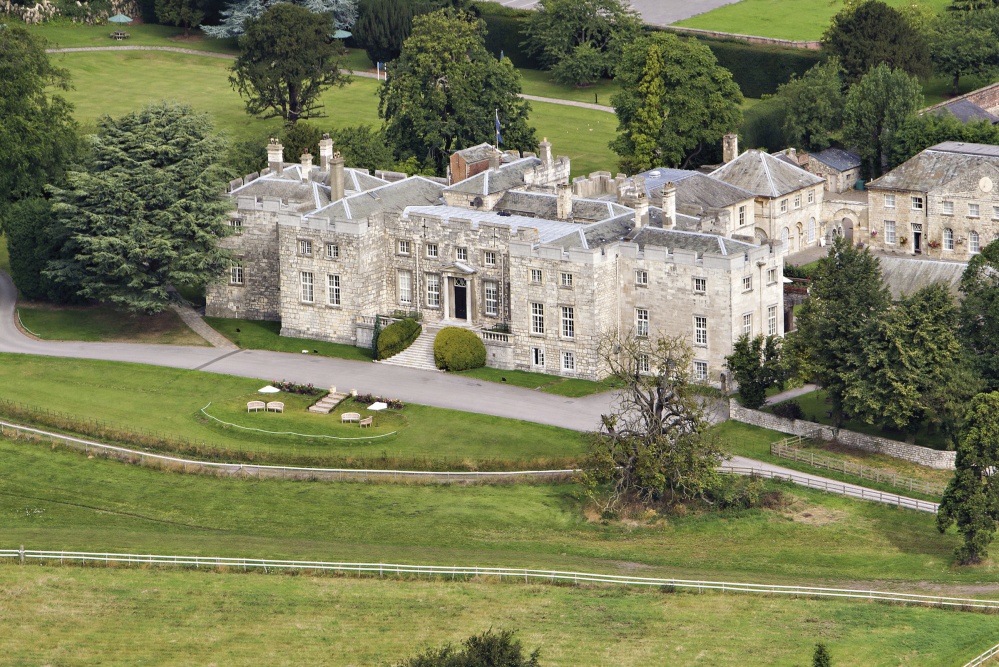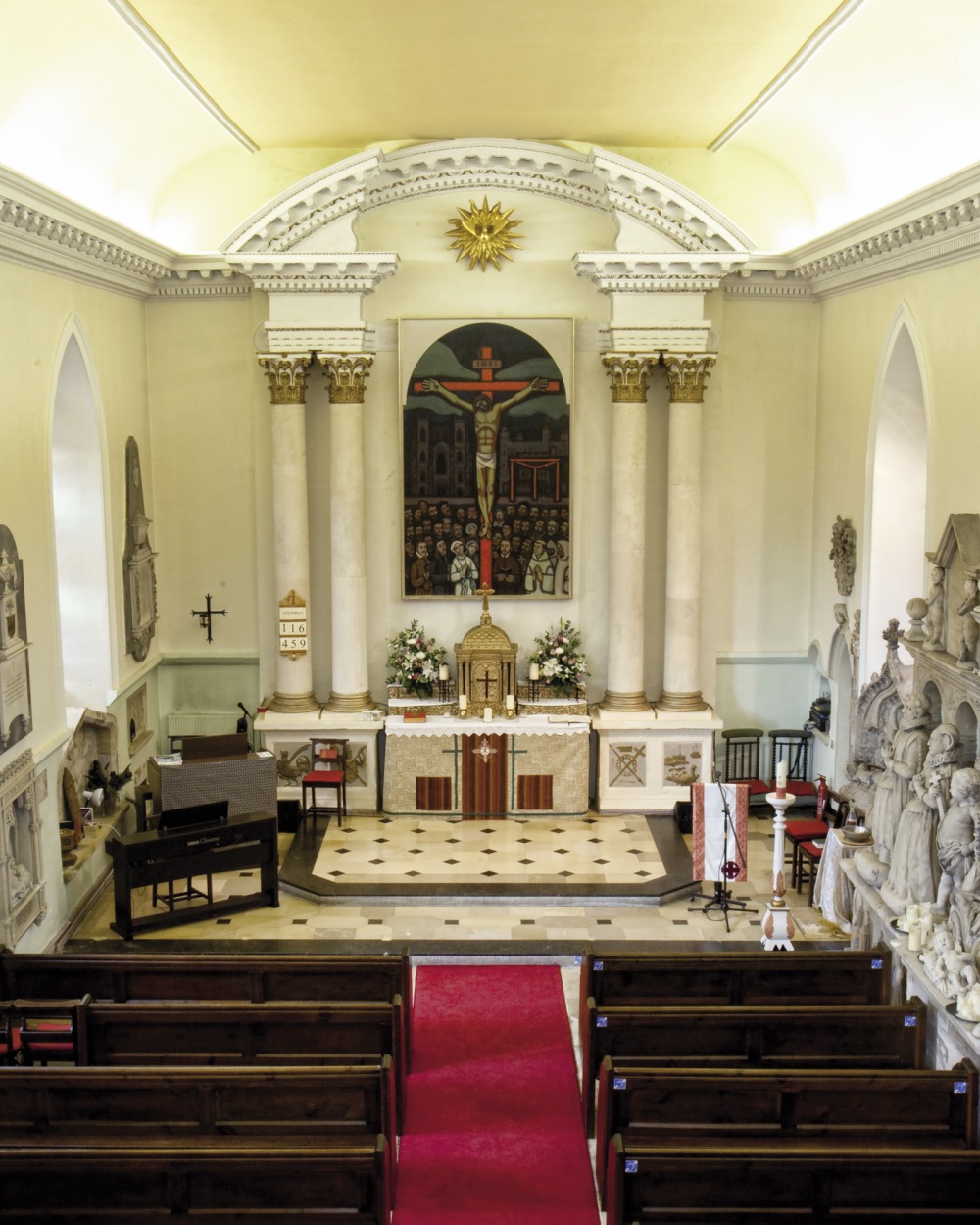A Castle For Keeps

From William the Conqueror in the 11th century to Sir William Vavasour in the 20th, Hazlewood Castle weathered 800 years of storms, until the events of the last century saw its future threatened

Since Sir William sold Hazlewood to a wealthy Yorkshire solicitor in 1908, the castle has undergone a series of radical transformations, including becoming a maternity hospital, a retreat for Carmelite Friars and the base for a high-profile celebrity chef. Now, under the sensitive stewardship of Ashdale Hotels, it is a successful hotel, conference and leisure centre. After 800 years of continuity, followed by a century of upheaval, it feels like Hazlewood Castle is on an even keel again.
The Vavasours deserve a book, never mind an article, all to themselves. They were quintessential trimmers, adjusting their politics and their religious beliefs (within reason) to fit in with the prevailing climate. They ducked and dived through the Baronial Wars of King John, the Wars of the Roses, the Reformation – which spelled disaster for other Yorkshire stately homes like Markenfield Hall, near Ripon – and the English Civil War. They were Catholics during Henry VIII’s reign but, amazingly, Henry left them alone.
Their story, and the Hazlewood story, starts in the wake of the Norman Conquest of 1066 when England’s political and social landscape changed forever. The land upon which Hazlewood sits was subject to the great harrying of the North during the winter of 1069-70, when William I forcibly replaced Anglo-Saxon landowners with his own countrymen. An unfortunate Saxon called Gamel was removed, to be replaced by a Norman, Mauger the Vavasour. Vavasour was the Norman name for a vassal and Mauger was the vassal of William de Percy, whom he had accompanied on the Norman invasion.
Mauger was a lucky man. The high limestone ridge on which Hazlewood stands commands some of the most glorious views in Yorkshire and it was (and is) supremely strategically located. Indeed, the peel tower, the oldest building still existing within the castle, was built as a look-out tower where beacons were lit to convey messages and warn of danger. For more than a century after Mauger arrived at Hazlewood, the Vavasours lived there peacefully and prosperously, with William Vavasour becoming an eminent judge under Henry II in 1186 and his son Robert, whose statue is on the left hand side of the West Door (the main entrance) to York Minster, becoming Sheriff of York. The Minster had every reason to be grateful to Robert, who allowed stone from the Hazlewood Quarry to be used for Minster repairs. Intriguingly, quarried stone from Hazlewood was also used in the construction of Eton College and the iconic King’s College Chapel at Cambridge University.
At this stage, may I beg indulgence and introduce a famous legend into our narrative? This may or may not be true, but there is circumstantial evidence to suggest that Robert’s daughter Maud was the basis for the legendary figure of Maid Marion. Maud married the dashing Fulk FitzWarin, who had all his lands confiscated after a violent quarrel with a vengeful King John. Fulk then sought refuge in the woods and became an outlaw, with Maud accompanying him, and together they devoted themselves to helping the poor. The dates and the characters of Fulk and Maud fit the legend neatly so why not let Hazlewood lay claim to one of the most famous of all English stories.
The one time that the castle did come under serious attack was in 1264, and it was self-inflicted as the Vavasours feuded among themselves during the turbulent reign of Henry III. Malger le Vavasour of Denton attacked John Vavasour, who was living at Hazlewood. The chapel was burnt and the house sacked, but John’s son William rebuilt both, and they then survived a whole litany of potential flashpoints and disasters, including The Black Death, the Peasants’ Revolt, the wars against the French, the Wars of the Roses, the Reformation, the Pilgrimage of Grace and The Rising of the North. The Vavasours were devout Catholics but, wisely, they were always loyal to the reigning monarch.
Even the Battle of Towton in 1461, the bloodiest battle on English soil where nearly 30,000 soldiers lost their lives in a single day, and which is only a couple of miles away from Hazlewood, passed the Vavasours by. Well, almost. Young 18 year-old Edward of York, the victor of Towton, visited Hazlewood for a celebratory bottle of wine or three after the battle before marching into York and claiming the throne from Henry VI. Just to be safe, the Vavasours had locked themselves in their chapel, but Edward of York had other things on his mind!
The family were equally canny with Henry VIII when their Catholicism might have proved fatal in those dangerous post-Reformation days. So when Henry came to York in 1536, the family offered him food and lodgings in the castle’s recently-built Tudor tower; Henry declined, but acknowledged the gesture by not razing Hazlewood to the ground. Equally, when Elizabeth I came to the throne in 1558 and restored the country to Protestantism after the brief reign of the Catholic Mary Tudor, Lady Anne Vavasour, whose portrait hangs in Hazlewood’s Great Hall, became one of the Queen’s most faithful ladies-in-waiting. As a result, the Vavasours were exempt from all Elizabeth’s anti-Catholic laws.
That did not mean the Vavasours ever renounced or dissembled about their religion. When the Catholic martyr Margaret Clitheroe was crushed to death in York in 1586, her supporters took her body, carried it out of the city and buried her under the medieval cross in the chapel yard. After the Gunpowder Plot of 1605, James I stepped up the persecution of Roman Catholics, but the family stayed loyal to the crown and fought in vain for the Royalists in the English Civil War, when Sir Walter Vavasour raised a regiment and lost his son John in battle at Edgehill in 1642. But peace returned to the country – and to Hazlewood – with the Restoration of Charles II in 1660, when Sir Walter, like his king, returned from exile. There then followed a period of prosperity for the Vavasours, with money being ploughed back into the estate for new buildings and renovations. The stable block, now the Guesthouse, was built in 1750 and during the next 20 years radical alterations were made to the castle and
the chapel, with the famous York architect John Carr being used for some of the more complex work. These were halcyon days for Hazlewood. Over the years, however, especially during the 19th century, the estate declined thanks to a combination of feckless incumbents, misguided marriages and radical changes in the British social and economic landscape.
The last Vavasour to live at Hazlewood was Sir William, who inherited the estate in 1885 and settled down to what he hoped would be a comfortable country life after a swashbuckling youth when he had fought for the Pope to prevent a united Italy. It was not to be. Financial problems beset Sir William, as the Hazlewood Estate was now only 1,100 acres and the income from tenants barely £1,000 a year. By 1908, struggling with debts of over £12,000, Sir William reluctantly put Hazlewood up for sale. It was bought by a prominent Yorkshire solicitor, Edward Simpson, for an undisclosed sum and Sir William emigrated to New Zealand to open a vineyard. In a lovely touch, Hazlewood Castle sells wine from the Vavasour vineyard in its Vavasour restaurant today.
The Simpsons lived happily at the castle for 40 years, adding the front terrace and a new entrance to the Great Hall, which opened the hall up to the most fabulous views across the county. At the same time, a magnificent medieval window was discovered in the Great Hall. During the Second World War and afterwards (until 1953), part of the castle was used as a maternity hospital to cope with the overflow from Leeds, and – not coincidentally – there were a number of local girls christened Hazel. Then, in 1953, the Fawcett family, rich Catholic farmers, bought Hazlewood, partly because Richard Fawcett had married Sir William’s granddaughter. The Fawcetts only lasted four years, selling to Mr Donald Hart in 1957 who, in turn, sold the castle to a community of Carmelite Friars in 1972, two years before his death. The Friars turned Hazlewood into a retreat but there are colourful stories of some Carmelites venturing into Tadcaster on Saturday nights to sample the local ale and to get gently merry.
It couldn’t last. In 1997, the Carmelites sold up and Hazlewood Castle Hotel emerged, first as a vehicle for the maverick celebrity chef John Benson-Smith, and more recently as one of the jewels in the crown of the Ashdale Hotel Group. General Manager Melissa Watson, and her deputy Andrew Brownridge, are extremely conscious of Hazlewood’s unique heritage. Melissa comments: ‘This is an absolutely amazing place in which to work. It is steeped in so much history and every room has a different story to tell. But I am also aware that we have to balance this history with providing our guests with a complete 21st century hotel experience, with superb service, quality food and first-class leisure, conference and wedding facilities. The two are certainly not mutually exclusive, but it can be a delicate balancing act.’
It helps that Andrew, apart from being a consummate hotelier like Melissa, is also a passionate historian and loves nothing better than taking guests for tours around the castle, where he brings the past to life by explaining how part of the peel tower, and the oldest room in the house, was once a maternity ward; by pointing out two skulls, carefully preserved, by the side of the altar in the magnificent chapel; by telling the stories behind the portrait of Lady Anne Vavasour, Elizabeth I’s lady-in-waiting, and the medieval window in the Great Hall; and by revealing a hidden priest hole and a staircase near reception. Andrew explains: ‘I love history and I love Hazlewood Castle, and the combination is irresistible. When I have any spare time, I spend it researching the past here and I’m currently compiling a short history of the castle. I find many of our guests are fascinated by their surroundings and I am only too delighted to show them around and tell them about the life and times of the amazing Vavasours. It provides context to their visit and their stay.’
It is fair to say that Hazlewood Castle’s first stint as a hotel wasn’t an unqualified success, with the heavy emphasis on quality cuisine deflecting from the castle’s other myriad charms. However, since Ashdale bought the castle in 2008, a sharper focus on leisure, including a new spa, combined with a celebration of Hazlewood’s past, has ensured the castle’s glory days have returned. Head Chef Tim Hamer has been at Hazlewood since 2008 and his modern European cuisine, sourced locally where possible, has proved tremendously popular.
I had not visited Hazlewood Castle for more than ten years, and much has changed during that time, but there was one constant: Tom, short for Thomasina, the Castle’s splendid long-haired black cat, was still behaving as if she owned the place. I appreciated the continuity; so fitting in a house where one remarkable family had lived for nine centuries.








